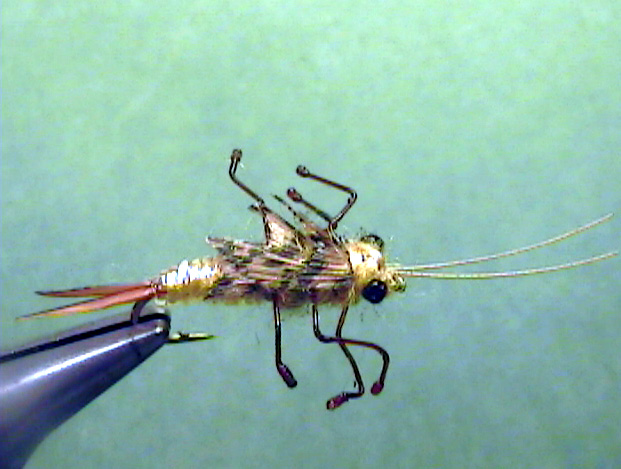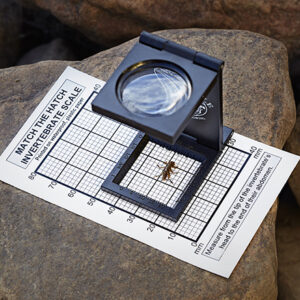Golden Stonefly nymphs are predators. That means they crawl on the bottom of
the stream searching for food that consist mainly of other small insects. The
Golden Stonefly nymphs take from two to three years to mature.
Like most all stonefly nymphs, they crawl out of the water to hatch. Usually they
crawl out on the banks but it can be a large rock protruding out of the water or
even a limb or log. The move from the fast water riffles and runs to slower,
shallower water in pockets along the banks to crawl out. This means the trout
have a perfect opportunity to eat them when they are migrating to the banks.
They tend to feed on them along the banks when the hatch starts probably
because that is the easiest place to intercept them. This means you need to fish
close in along the banks and be careful not to spook trout feeding on the
nymphs in the shallow water.
Now, you can fish Golden Stonefly nymph imitations any time during the year
when they are not hatching. The big stoneflies fee mostly during the evenings
and they are not usually found exposed to the trout on the bottom during the
day. It’s very doubtful, except during a hatch, that the trout feed selectively on
the Golden Stonefly nymphs but the trout do get used to seeing them and the
nymphs sometimes work regardless of the time of year.
Nymph Presentation:
Fish the stonefly nymphs in the runs and riffles using the “high sticking” method.
You want to make sure you swing the fly out of the fast water along the banks
when you do this. As I just stated, when the Golden Stonefly nymphs begin to
hatch, they will migrate to the shoreline to crawl out of the water. This starts
occurring very late in the day. I wouldn’t start fishing the nymph imitation any
earlier than mid-afternoon. You want to simulate the migrating behavior with you
fly or Perfect Fly imitation of the Golden Stonefly nymph.
If your fishing from the bank, cast the fly out into the runs and riffles and bring it
back all the way to the bank. You should stay away from the banks to cast when
it is possible to do so to prevent spooking shallow feeding trout along the banks.
If the trees prevent this, and you are wading, I suggest you use a down and
across cast allowing the fly to swing from the runs and riffles all the way to the
bank. You accomplish this by making a reach cast, reaching out towards the
center of the stream, and then slowly swinging the fly across to the opposite side
all the way to the bank.
You will need to add a lot of weight to the fly to keep in on the bottom. If your fly
stays in the very fast water and there is no moderate to slow moving water near
the banks, then you are fishing in the wrong type of place. You want to select
areas where there is at least a small area of moderate to slow moving water
along the bank and fast moving runs and riffles out in the stream. The fly should
stay on the bottom, not mid-depth or near the surface.
Copyright 2013 James Marsh



